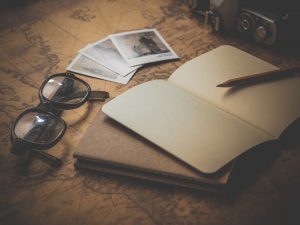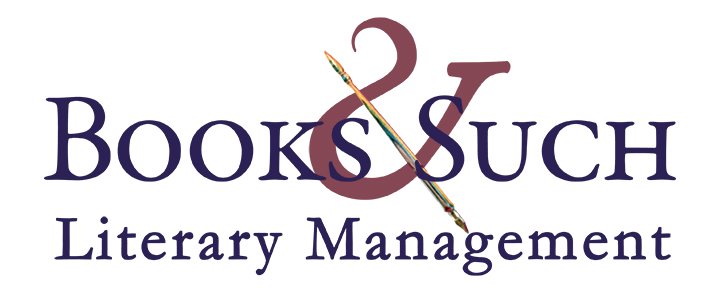Blogger: Janet Kobobel Grant
Friends tell you that you need to write the story of your experience. And your story burns within you–you need to write it. So you set out to construct your memoir.
Before you take another step, let’s explore exactly what it takes to write memoir.
What is a memoir?
I regularly hear writers, agents, and even editors misidentify what they are talking about when the discussion turns to memoir. The word memoir has developed cache in today’s market, which has resulted in many industry professionals using it as a catch-all word that’s synonymous with personal story. But, in actuality, memoir is a subcategory of narrative nonfiction.
Both narrative nonfiction and memoir share certain qualities:
- The author writes his personal experiences as a story, which means…
- It contains characters (actual people);
- A protagonist drives the story (generally the author or the subject of the book plays the role of protagonist);
- The author creates a character arc for the protagonist. In other words, the protagonist starts out with a problem to solve and journeys through difficulties until arriving at a different place internally by the end of the book. The transition is gradual, creating an arc;
- Fleshed-out scenes. Details involving the senses enable the reader to envision being in that moment with the protagonist;
- And the author creates a story arc. Not only does the protagonist shift internally, but the story progresses from the initial conflict or problem to some sort of resolution.
Narrative nonfiction uses fiction techniques
These characteristics add up to a point of commonality between memoir and narrative nonfiction–they both use fiction techniques to put the reader into the moment of the story. Think Seabiscuit or Unbroken, both written by Lauren Hillenbrand and both of which required immense research but are told as gripping stories. They both fall into the category of narrative nonfiction because they are not Hillenbrand’s stories. Instead, they are fascinating, real events that Hillenbrand has deeply researched and written using fiction techniques.
Here’s the beginning of Seabiscuit to give you a sense of the voice Hillenbrand used: “Charles Howard had the feel of a gigantic, onrushing machine: You had to either climb on or leap out of the way. He would sweep into a room, working a cigarette in his fingers, and people would trail him like pilot fish. They couldn’t help themselves.
“Fifty-eight years old in 1935, Howard was a tall, glowing man in a big suit and a very big Buick. But it wasn’t his physical bearing that did it. He lived on a California ranch so huge that a man could take a wrong turn on it and be lost forever, but it wasn’t his circumstances either. Nor was it that he spoke loud and long; the surprise of the man was his understatement, the quiet and kindly intimacy of acquaintance….There was a certain inevitability to Charles Howard, an urgency radiating from him that made people believe that the world was always going to bend to his wishes.”
Narrative nonfiction often tells a story as an objective, journalistic piece
That’s the case with Truman Capote’s In Cold Blood. It starts out this way: “The village of Holcomb stands on the high wheat plains of western Kansas, a lonesome area that other Kansans call ‘out there.’” Capote goes on for several pages establishing the details of this little community and providing a sense of its keen isolation from the rest of the world.
What makes a personal story a memoir?
A memoir would not be written in the approach Capote used because memoir is subjective, based on the writer’s perspective of what happened. Capote presents himself as an outsider journalist, approaching the shooting murders of a farm family objectively.
Here’s the beginning of the memoir Lab Girl by Hope Jahren: “There is nothing in the world more perfect than a slide rule. Its burnished aluminum feels cool against your lips, and if you hold it level to the light you can see God’s most perfect right angle in each of its corners. When you tip it sideways, it gracefully transfigures into an extravagant rapier that is also retractable with great stealth. Even a very little girl can wield a slide rule, the cursor serving as a haft. My memory cannot separate this play from the earliest stories told to me, and so in my mind I will always picture an agonized Abraham just about to almost sacrifice helpless little Isaac with his raised and terrible slide rule.”
Jahren shows you what the world looked like from her young girl’s eyes. She showcases that the story is told in a subjective way.
A memoir consists of not only a factual story but also:
- Generally is told in first person about an individual’s unique experience.
- Is swathed in lavish language. Memoirs are expected to attain a certain literary quality. Which is why, when a standup comedian writes a “memoir,” it’s highly unlikely to qualify for that label. His or her book is more likely to be an autobiography. But we don’t use that label much nowadays because “memoirs” are more sought after.
- Doesn’t usually tell the author’s entire life but instead portrays a snippet of it (for example, the day the person happened to be in the twin towers as they fell down, then the aftermath in that person’s life).
- Tend to be more introspective than other narrative nonfiction.
Is your personal story a memoir?
You’re headed to memoir terrain if you can check off these attributes:
- Exquisite writing
- Deep knowledge of self and the world and how the two collide
- Showcases a universal truth
- Written for the reader rather than for the writer. You aren’t writing because it’s personally cathartic–that’s a story not for public consumption. You’re writing because your story would appeal to people beyond those who share similar experiences. You are offering insights to life that benefit every reader.
What memoir or narrative nonfiction have you read that meet the criteria for a well-written book?
TWEETABLES
What makes a personal story a memoir? Click to tweet.
Think you’re writing a memoir? This blog post explains what it takes to qualify as one. Click to tweet.

Dear Janet, I swoon at permission to write words “swathed in lavish language.” This is what makes memoir delicious to design or devour.
Ann Voskamp’s writing is a feast for my soul–always.
Thank you for helping aspiring memoir writers. 🙂
Blessings ~ Wendy Mac
I love Ann Voskamp’s poetic style as well. Such writing warms my heart.
WendyMac, your writing is a feast for OUR souls. Good on yer.
God Meets Girl and Surprised By Oxford are both unforgettable spiritual memoirs. On my “keep this and read again” shelf.
I so agree, Stephanie. Those are two books worthy of occupying shelf space.
When We Were the Kennedys by Monica Wood is one of my all-time favorite memoirs. Beautifully written, tragic, poignant, and uplifting all at the same time. The Year of Magical Thinking by Joan Didion is another memoir I enjoyed immensely. And Surprised by Joy by C.S. Lewis, no doubt! (Memoir is one of my favorite genres to read.) Thanks for the great post, Janet!
Barb (LOVE that name, also my wife’s), you might look for David Bellavia’s “House To House”, the memoir of a rough Christian in the hell of Fallujah.
Barb, memoirs are one of my favorite genres to read in two. High five!
A memoir? No way. All I need is an aphorism:
“The good die young. Badass lives forever.”
Janet, thanks for this post with great information on memoirs and what makes a memior. I have read memoirs, but most of them were years ago and were part of my hundreds of books I had to painfully part with in 2014 when we had to move to a townhome with much less space than our home. I still miss my books, but hope someone else is being blessed by them. Of the ones I do remember that affected me would be, Ann Frank’s Diaries (Is that a type of memoir?) and Corrie Ten Boom, The Hiding Place. Most personal stories I have read might be, in my opinion, mini memoirs. They are true stories and remembrances written within larger works, mostly educational texts, or other nonfiction pieces. Some have been portions selected for magazine articles. I have those I have on my list to read, along with many other books. Your selection, and portion of, Sea Biscuit, is wonderfully written and beckons me to get that book and read on.
Your article was very encouraging to me, because of writing my own memoir, Losing My Mind, Finding God’s. But, for now, I have placed that on hold, to pursue another writing project to present at Northwestern Christian Writers Conference this July. My memoir can wait for the right time. I want to be wise in how I go about things.
Thanks again for the info. I have learned so much from this blog.
Elizabeth, the mini-memoirs you’ve read are other ways to use one’s personal story–in a traditional nonfiction book, in magazine articles, etc. By the way, you’re wise not to rush your memoir. That type of writing should not be rushed; you only get to tell it in one place once.